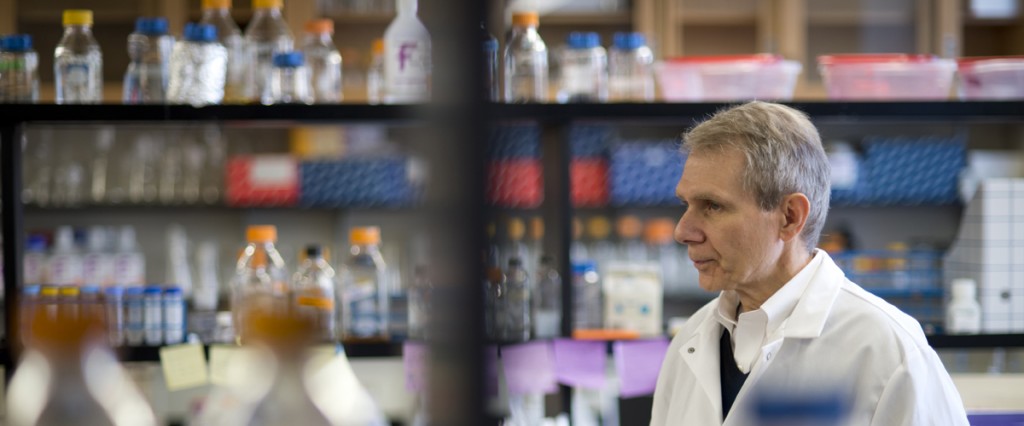by Thea Singer
Hospital-related staph infections are rampant. In 2005 alone there were an estimated 478,000 cases in the U.S., according to the Centers for Disease Control and Prevention. The numbers are dropping, the agency recently reported in a release, “but more work is needed.”
A team led by Kim Lewis, University Distinguished Professor and director of Northeastern’s Antimicrobial Discovery Center, is at the forefront of that work.
Staphlococcus aureus, the bacterium behind the infections, evades antibiotics, causing serious chronic or relapsing diseases including endocarditis and osteomyelitis. In a new paper published in the journal Nature Microbiology, Lewis and his colleagues reveal the reason behind that evasion.
The researchers zeroed in on a subpopulation of bacterial cells called “persisters,” in the process leading the way to new drugs to kill them.
Formed by all pathogens, persisters are living cells that exist in a dormant, sporelike state. Because conventional antibiotics attack only actively functioning bacterial cells, persisters survive their onslaught. But once the antibiotic has been flushed from the system, the persisters “wake up” and multiply, reinfecting the host.
“We found that nothing that we or anyone else had learned from E. coli or other bacteria applied to staph,” says Lewis, who discovered persisters’ role in relapsing infections in 2000. Staph, says Lewis, had a “completely new” mechanism for persister formation. Loss of energy shut the staph cells down.
“I think what we discovered is a general mechanism of persister formation that likely operates in all bacteria but has been overlooked,” says Lewis.
Energy: the force of life
From a molecular standpoint, that mechanism is a drop in the chemical adenosine triphosphate, or ATP, “the energy currency” of the cell, explains Brian P. Conlon, a senior research scientist at Northeastern. Conlon is joint first author of the paper with Sarah E. Rowe, a former postdoctoral research associate in Lewis’ lab.
Additional researchers from Northeastern, as well as from the Geisel School of Medicine at Dartmouth College and the Pacific Northwest National Laboratory, contributed to the paper.
ATP stores the energy a cell needs to do everything from growing to reproducing. In staph, the researchers found, when nutrients and oxygen became scarce due to an expanding population, ATP levels plummeted and many formerly active bacterial cells entered a phase that mirrors the persister state, making them immune to antibiotics.
“The cells low in ATP were a thousand-fold more likely to survive an antibiotic challenge than those with regular levels of ATP,” says Conlon. “This tells us that the energy level of the cell predicts whether the cell will live or die when it’s treated with antibiotics.”
A drug built for persisters
The finding sheds light on why the antibiotic ADEP4, a derivative of the drug acyldepsipeptide that Lewis is developing with Arietis Pharmaceuticals, is so effective at killing staph, and may be just as effective against other drug-tolerant pathogens.
Conventional antibiotics, such as penicillin and ciprofloxacin, require bacterial cells to be actively functioning in order to work; that means cells with lots of ATP. ADEP4, on the other hand, works in the absence of ATP, making it a perfect fit for those dormant, low-ATP persister cells.
“To properly treat persisters you need compounds that are going to kill the cell by a mechanism that doesn’t depend on the availability of ATP,” says Lewis.
How does ADEP4 operate? It first binds to an enzyme in the bacterial cell whose job is to digest proteins that have gone bad—think of a cellular garbage collector, says Lewis. In so doing, it essentially transforms the enzyme into an evil doppelgänger—the enzyme now forces both growing and dormant cells to self–digest.
“ADEP4 is an example of how understanding the cause of antibiotic tolerance can lead to developing drugs that will directly kill these cells,” says Conlon.
Originally published in news@Northeastern on April 25, 2016.


